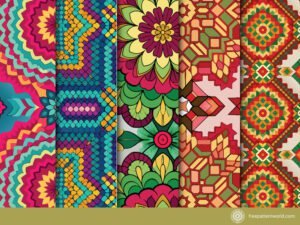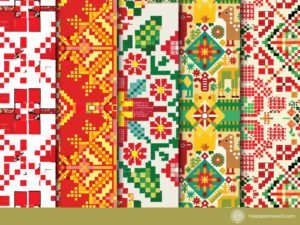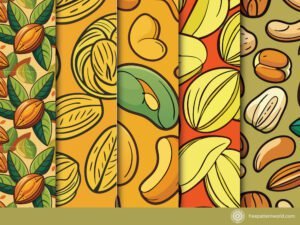
Line pattern design is a captivating art form that explores the beauty of simplicity and complexity through the use of lines. From minimalist geometrics to intricate motifs, line patterns offer endless possibilities for creative expression and visual storytelling. In this blog post, we delve into the world of line pattern design, uncovering its history, techniques, and contemporary applications.
Understanding Line Patterns:
Line patterns are composed of one or more lines arranged in a repeating sequence to create a visual motif. These patterns can vary in complexity, density, and scale, ranging from sparse, delicate linework to dense, intricate designs. Lines can be straight, curved, wavy, or irregular, offering a diverse range of aesthetic possibilities.

Techniques of Line Pattern Design:
Line pattern design encompasses a wide range of techniques and approaches, each with its own unique characteristics and challenges. Some common techniques include:
Digital Illustration: Digital illustration software, such as Adobe Illustrator or Procreate, offers a versatile platform for creating precise and intricate line patterns. Artists can manipulate lines with precision, experiment with color and texture, and easily edit and revise their designs.

Vector Graphics: Vector graphics software, such as Adobe Illustrator, is commonly used in professional design settings to create scalable and editable line patterns. Vector-based graphics are composed of mathematical equations rather than pixels, allowing for crisp, clean lines that can be resized without loss of quality.

Applications of Line Patterns:
Line patterns are widely used across various disciplines and industries, from graphic design and fashion to architecture and interior design. Some common applications include:
- Textile Design: Line patterns are frequently used in textile design to create visually appealing fabrics for fashion, upholstery, and home decor. From classic stripes and chevrons to intricate geometric motifs, line patterns add texture and interest to textiles.
- Graphic Design: Line patterns are a staple of graphic design, appearing in logos, branding materials, packaging, and digital interfaces. Whether used as a background element, a decorative motif, or a structural component, line patterns enhance visual appeal and create a cohesive design language.
- Interior Design: Line patterns can transform interior spaces, adding depth, rhythm, and visual interest to walls, floors, and furnishings. From simple pinstripes and herringbone patterns to complex arabesques and filigrees, line patterns can evoke a wide range of moods and styles.
- Architecture: Line patterns play a crucial role in architectural design, shaping the visual character of buildings and structures. From facade details and ornamentation to floor plans and spatial organization, line patterns inform the aesthetic and functional aspects of architecture.

Exploring Line Patterns in Contemporary Design:
In contemporary design, line patterns continue to inspire and captivate with their versatility and adaptability. Designers are experimenting with new materials, technologies, and aesthetics to push the boundaries of line pattern design.

Additionally, sustainability is becoming an increasingly important consideration in line pattern design. Designers are exploring eco-friendly materials and production methods to minimize environmental impact and promote responsible consumption.
Conclusion:
Line pattern design is a fascinating and dynamic art form that spans cultures, disciplines, and centuries. From ancient civilizations to contemporary design studios, line patterns have endured as a timeless expression of creativity, innovation, and human ingenuity. Whether used in textiles, graphics, interiors, or architecture, line patterns continue to inspire, delight, and enrich our lives with their beauty and meaning.
Download more free pattern designs from freepatternword and freepik.
What is line pattern design?
Line pattern design involves creating visual motifs using lines arranged in repeating sequences. These patterns can vary in complexity, style, and application, ranging from simple geometrics to intricate motifs.
What are some common types of line patterns?
Common types of line patterns include stripes, chevrons, herringbone, grids, swirls, waves, zigzags, and abstract geometric motifs. These patterns can be adapted and combined in endless ways to create unique designs.
Where are line patterns used?
Line patterns are used across various industries and disciplines, including textile design, graphic design, interior design, architecture, and art. They can be found in fabrics, wallpapers, logos, packaging, architectural ornamentation, and more.
What influences line pattern design?
Line pattern design can be influenced by a wide range of factors, including cultural traditions, historical references, nature, art movements, fashion trends, and personal creativity. Designers often draw inspiration from diverse sources to create meaningful and visually engaging patterns.
Are there any trends in line pattern design?
Trends in line pattern design can vary depending on current influences and cultural movements. Some recent trends include the fusion of traditional craftsmanship with digital innovation, the exploration of three-dimensional effects, and a focus on sustainability and eco-friendly materials.



